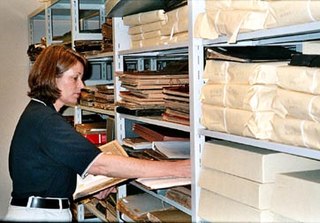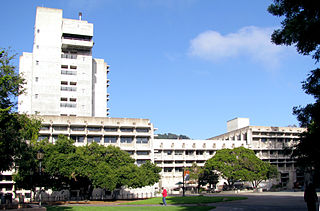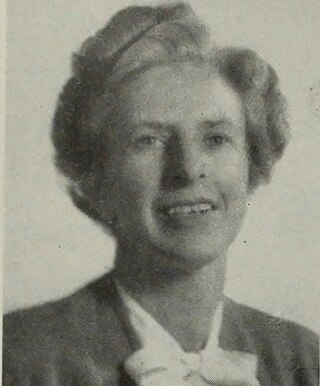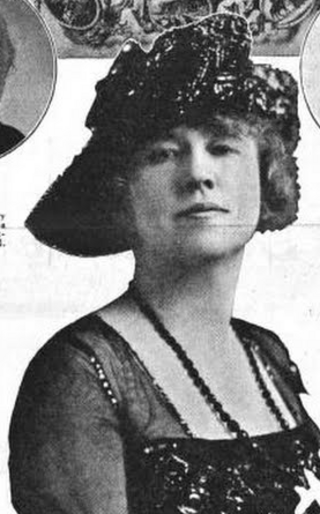
An archivist is an information professional who assesses, collects, organizes, preserves, maintains control over, and provides access to records and archives determined to have long-term value. The records maintained by an archivist can consist of a variety of forms, including letters, diaries, logs, other personal documents, government documents, sound or picture recordings, digital files, or other physical objects.

The College of Environmental Design, also known as the Berkeley CED, or simply CED, is one of fifteen schools and colleges at the University of California, Berkeley. The school is located in Bauer Wurster Hall on the southeast corner of the main UC Berkeley campus. It is composed of three departments: the Department of Architecture, the Department of City and Regional Planning, and the Department of Landscape Architecture and Environmental Planning.

Amateur film is the low-budget art of film practised for passion and enjoyment done without payment.

The following outline is provided as an overview of and topical guide to library and information science:

Textile design, also known as textile geometry, is the creative and technical process by which thread or yarn fibers are interlaced to form a piece of cloth or fabric, which is subsequently printed upon or otherwise adorned. Textile design is further broken down into three major disciplines: printed textile design, woven textile design, and mixed media textile design. Each uses different methods to produce a fabric for variable uses and markets. Textile design as an industry is involved in other disciplines such as fashion, interior design, and fine arts.

The Pueblo Revival style or Santa Fe style is a regional architectural style of the Southwestern United States, which draws its inspiration from Santa Fe de Nuevo México's traditional Pueblo architecture, the Spanish missions, and Territorial Style. The style developed at the beginning of the 20th century and reached its greatest popularity in the 1920s and 1930s, though it is still commonly used for new buildings. Pueblo style architecture is most prevalent in the state of New Mexico; it is often blended with Territorial Revival architecture.
The Design History Society is an arts history organisation founded in 1977 to promote and support the study and understanding of design history. The Society undertakes a range of charitable activities intended to encourage and support research and scholarship, to offer information and create networking opportunities, to foster student participation and public recognition of the subject, and to support regional links and events. The Society welcomes members from related disciplines such as anthropology, architecture and art history, business history, the history of science and technology, craft history, cultural studies, economic and social history, design and design management studies. An elected Executive Committee and Board of Trustees works to enable the activities of the Society, and to ensure that design history is appropriately represented in higher education and research bodies in the UK.

In conservation, library and archival science, preservation is a set of preventive conservation activities aimed at prolonging the life of a record, book, or object while making as few changes as possible. Preservation activities vary widely and may include monitoring the condition of items, maintaining the temperature and humidity in collection storage areas, writing a plan in case of emergencies, digitizing items, writing relevant metadata, and increasing accessibility. Preservation, in this definition, is practiced in a library or an archive by a conservator, librarian, archivist, or other professional when they perceive a collection or record is in need of maintenance.

Geraldine "Gerry" Knight Scott was a California landscape architect. She taught landscape architecture at the University of California, Berkeley and was a Fellow of the American Society of Landscape Architects. She was a founding member of the California Horticultural Society and received various awards and honors.
Howard Besser is a scholar of digital preservation, digital libraries, and preservation of film and video. He is Professor of Cinema Studies and the founding director of the NYU Moving Image Archiving and Preservation Program ("MIAP"), a graduate program in the Tisch School. Besser also worked as a Senior Scientist at New York University's Digital Library Initiative. He conducted extensive research in image databases, multimedia operation, digital library, and social and cultural influence of the latest Information Technology. Besser is a prolific writer and speaker, and has consulted with many governments, educational institutions, and arts agencies on digital preservation matters. Besser researched libraries' new technology, archives, and museums. Besser has been actively contributing at the international level to build metadata and upgrade the quality of the cultural heritage community. He predominantly, focused on image and multimedia databases; digital library aspects ; cultural and societal impacts of information technology, and developing new teaching methods through technology such as web-based instructions and distance learning. Besser was closely involved in development of the Dublin Core and the Metadata Encoding and Transmission Standard (METS), international standards within librarianship.
George Joseph Ranalli is an American modernist architect, scholar, curator, and fellow of the American Institute of Architects. He is based in New York City.

Mary Miss is an American artist and designer. Her work has crossed boundaries between architecture, landscape architecture, engineering and urban design. Her installations are collaborative in nature: she has worked with scientists, historians, designers, and public administrators. She is primarily interested in how to engage the public in decoding their surrounding environment.

Margaret Hilbiber Baylis was an American graphic designer, illustrator, and author of gardening books.

Alice Ross Carey was an American preservation architect, advocate, and early practitioner of historic preservation, restoration, and reuse.

Katherine Davies Jones was an American botanist known for her developments in California horticulture.
Community archives are archives created or accumulated, described, and/or preserved by individuals and community groups who desire to document their cultural heritage based on shared experiences, interests, and/or identities, sometimes without the traditional intervention of formally trained archivists, historians, and librarians. Instead, the engaged community members determine the scope and contents of the community archive, often with a focus on a significant shared event, such as the Ferguson unrest (2014). Community archives are created in response to needs defined by the members of a community, who may also exert control over how materials are used.

Meredith Evans is an archivist, historian and scholar and the director of the Jimmy Carter Library and Museum in Atlanta. Her work focuses on the African-American experience in the United States, including the documentation of archival records from African-American churches in the Atlanta area, and the preservation of social media from recent civil rights protests such as those of the Ferguson unrest in Ferguson, Missouri after the shooting of Michael Brown.

Porter Garnett was a playwright, critic, editor, librarian, teacher, and printer.
Nicholas de Monchaux is a designer and author, and currently Professor and Head of Architecture at MIT. He was formerly Professor of Architecture and Urban Design in the College of Environmental Design at the University of California, Berkeley and Director of the Berkeley Center for New Media.

Mary Floyd Williams was an American librarian and California historian. In 1918, she became the first woman to complete a doctorate in history at the University of California, with a dissertation on the San Francisco Committee of Vigilance.















